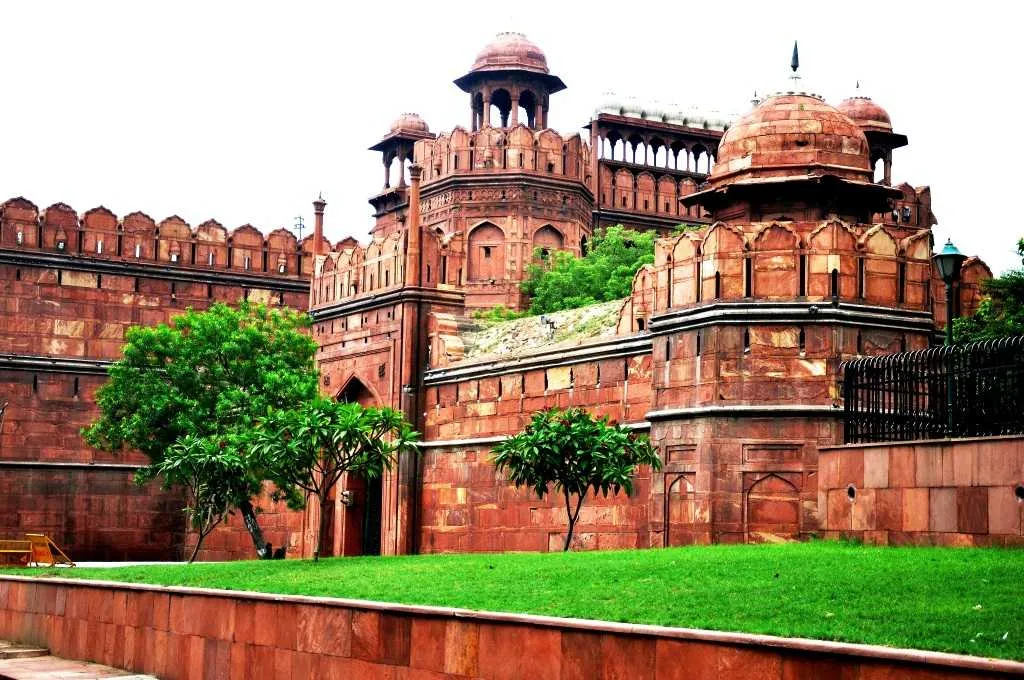
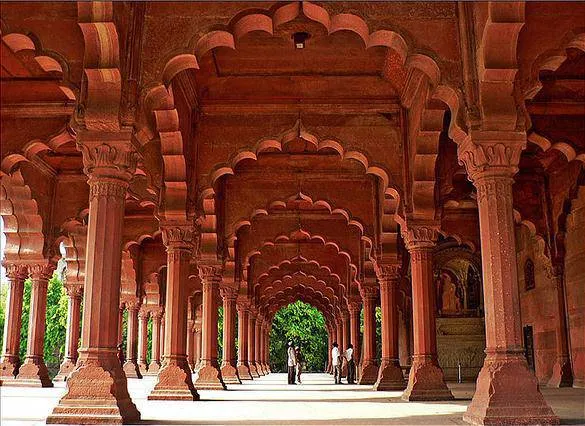
The Red Fort is a fort built in the seventeenth century by the Mughal Emperor Shah Jahan in Delhi, surrounded by walls. The fort was the capital of the Mughal Empire till 1857. Then the British Indian government was transferred to Calcutta, India's capital, when the Mughal emperor Bahadur Shah was exiled. By 1947 the British used this fort as a military camp. Currently it is a popular tourist center and a strong symbol of the sovereignty of the Republic of India. On the occasion of Indian Independence Day, Indian Prime Minister hoists the national flag at a place adjacent to the Lahore Gate of Red Fort. In 2007, this facility was chosen as UNESCO World Heritage Site.
In 1638 Emperor Shahjahan started the construction of the great fort. Construction was completed in 1848. Initially, the name of this fort was the Kila-i-Mubarak or the blessed fort because the family of Emperor lived in this fort. The fort is situated on the bank of the river Jamuna. Due to the drought-prone trench in the river, this naturally drained trench The fort is connected with another ancient fort named Salimgarh Fort, the northern and eastern corner walls. In 1546, Islam Shah Suri built this defense fort. The planning and decoration of the Red Fort is an important example of Mughal architecture and painting excellence during the rule of Shahjahan. In reality, the red fort was the palace of Shahjahanah, the new capital of the seventh city of Shahjahan in Delhi area. Later, however, he transferred the capital from Delhi to Agra. On March 11, 1783, the Sikhs, temporarily, entered the Red Fort and took control of Diwan e Mango.

The last Mughal Emperor living in the Red Fort was the second Bahadur Shah Zafar. After the failure of the Great Revolt of 1857, the second Bahadur Shah Jafar left the Red Fort on September 17th. Later he returned to this castle as a British prisoner. Here he started his trial on January 27, 1858 and on 7 October he was sentenced to exile. Then the authority of the Red Fort went to the British Indian army. They used to use it as a cantonment. After the defeat of Azad Hind Fauj in 1945, the prisoners of war were tried in the Red Fort. Since independence until 2003, the fort was under the control of the Indian Army.
Red cottage decoration and artwork are very high quality. This festive art created by a mix of Persian and European and Indian art forms, colorful and individuality claimants. Delhi's Red Fort is one of the most important structures in India with the addition of Indian art in historical sources. This castle is also very important in the field of architectural pleasures. This pearl mosque Moti Mosque on the west side of Hammam is Moti Mosque. This mosque was built a lot later. In 1659, Aurangzeb, son of Shahjahan, built it as a private mosque. It is a small three-domed mosque. It's built on the entire white pyramid.
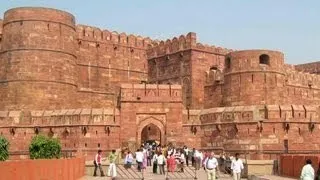
There is a formal garden in the north of the fort. His name is Hayat Box Bag or life-giving garden. It is divided into two interconnected water streams. North: South water stream has two rooms on both sides. In the year 1842, the last emperor Bahadur Shah Jafar built the third room, at the garden center, in two waterfalls. Due to this, the Red Fort was declared as a national importance in 1913 and the government took charge of the maintenance of the fort. The walls of the castle are smooth and strong. The two main gates of the fort are Delhi Gate and Lahore Gate. The Lahore Gate is the main door. This gate covers a long covered market route. Its name is Chatta Chak. This road has two stitches arranged by a stall, like a wall shop. It is found in Chatta chowk and it is found in north-south direction. This route is actually the border between the Western military field and the eastern palace. The gate on the south side of this path is the Delhi Gate.
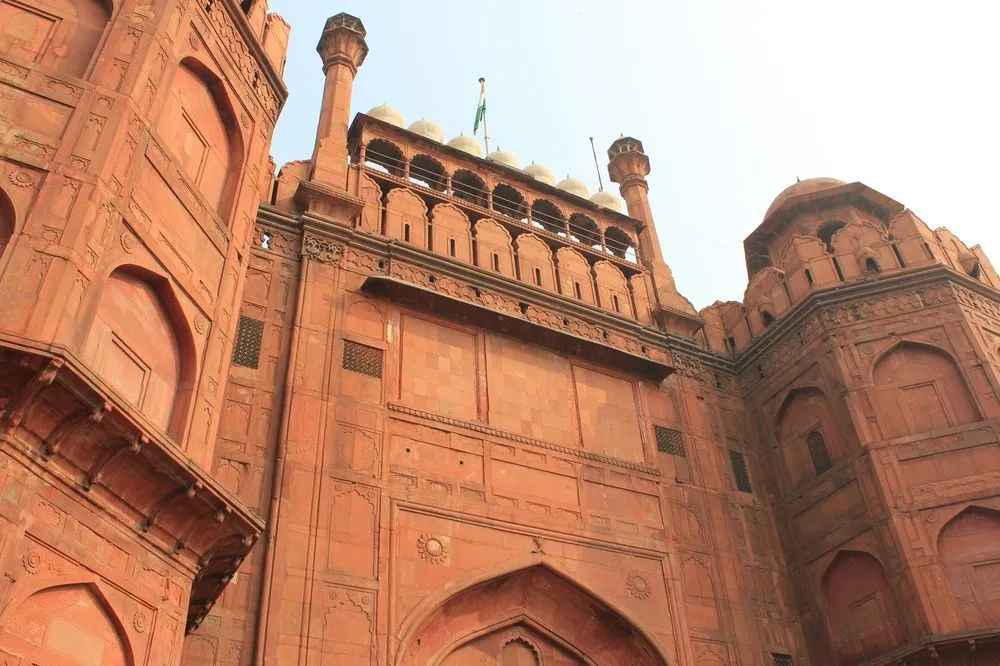
There is a large open area outside the Delhi gate. It was once used as the courtyard of Dewane Mango. There, sitting on an ornate throne, there was a glimpse of the emperor. Those pillars were painted with gold, and gold and silver railing were kept separate from the throne. Deewane Khas was a room full of white pavements. His pillars were decorated with flowers. The most valuable metals used for the inner decoration were behind the throne. The rooms of the Emperor's family were behind. Those rooms were located on the verge of the two edges of the eastern edge of the fort. The row was located on two high altars and the rooms of the Yamuna could be seen from the rooms. The rooms were connected with each other by a secluded water channel named Nahre Behish or Paradise Water. The water stream was stretched between each room. The water stream was nourished by dragging water in a tower named Shah Burj in the northeast corner of the fort from the river Jamuna. The palace was built according to the paradise described in the Qur'an. If there is a heaven in the palace in the palace, then it is here, here it was inscribed on the wall. Although built in accordance with Islamic art, these rooms also found the influence of Hindu art. The palace complex is considered to be one of the finest monuments in Mughal architecture.
The room on the south side of the palace was the zenana or the residence of women. The name of the small room is Mumtaz Mahal, now a museum and the other is named Rangmahal. Rang Mahal is famous for its gorgeous ornamental ceiling and Nahar e Behisht for its water-laden lithosphere reservoir.
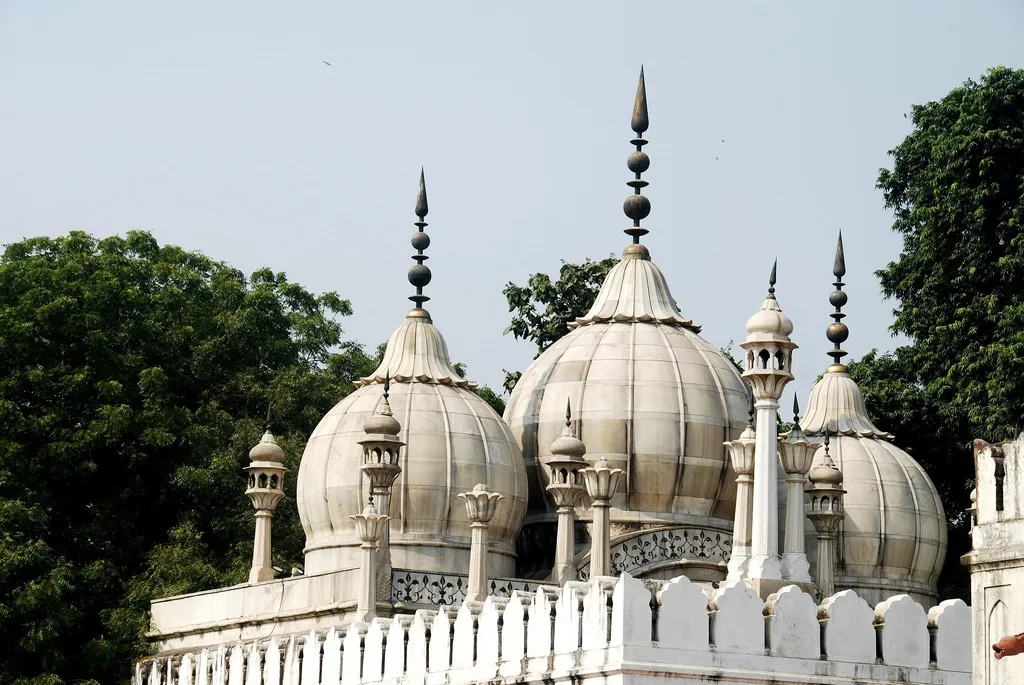
Moti Mosque
Moti Mosque on the west side of Hammam is Moti Mosque. This mosque was built a lot later. In 1659, Aurangzeb, son of Shahjahan, built it as a private mosque. It is a small three- domed mosque. It's built on the entire white pyramid. There is a formal garden in the north of the fort. His name is Hayat Box Bag or life-giving garden. The garden is divided into two interconnected waterways. North: South water stream has two rooms on both sides. In the
year 1842, the last emperor Bahadur Shah Jafar built the third room, at the garden center, in two waterfalls.
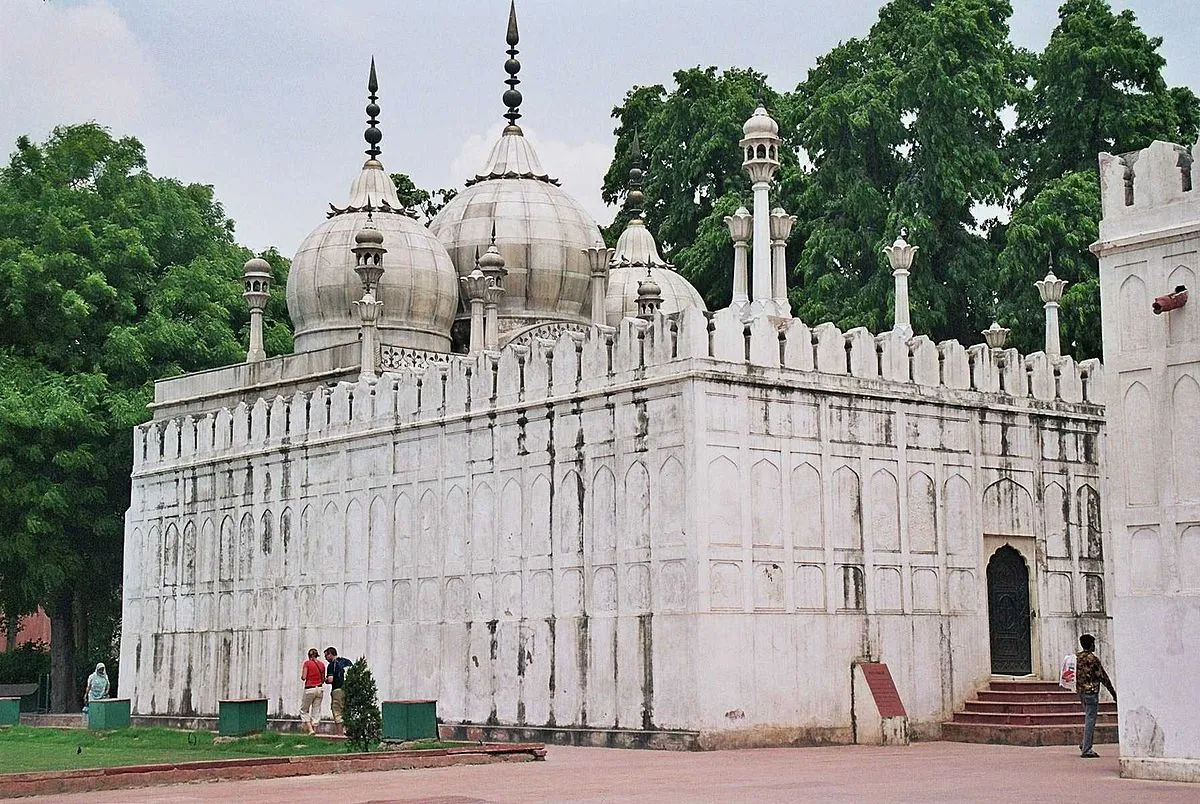
Red Fort is the oldest tourist spot in old Delhi. Every year, thousands of tourists visit this fort. On the occasion of the 15th August, on the premises of this fort, Indian Prime Minister hoisted the national flag and addressed the nation on the occasion of Independence Day. The Red Fort is also the oldest temple in Old Delhi. In the evening, Light and Sound Shore exhibition of Mughal history is in the fort. There is also a museum in memory of martyrs in the freedom struggle of India. In addition to that museum, there is an archaeological museum and an Indian War Memorial Museum. In December 2000, two army jaw ans and one civilian were killed in the attack on Lashkar-e-Taiba militant attack on the Red Fort premises.